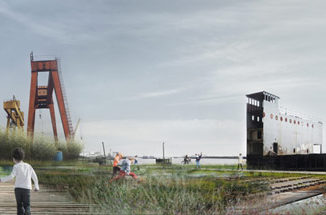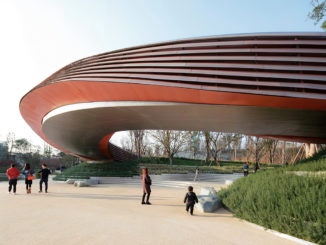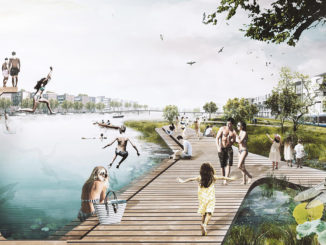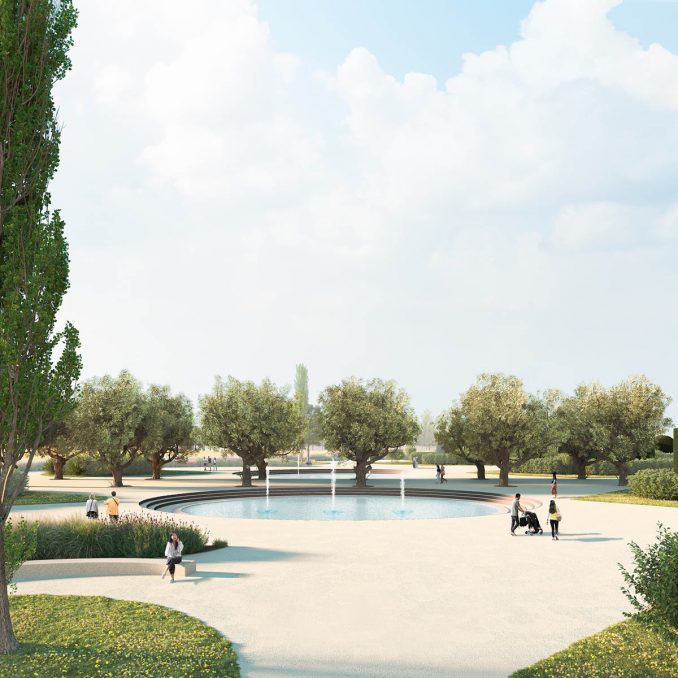
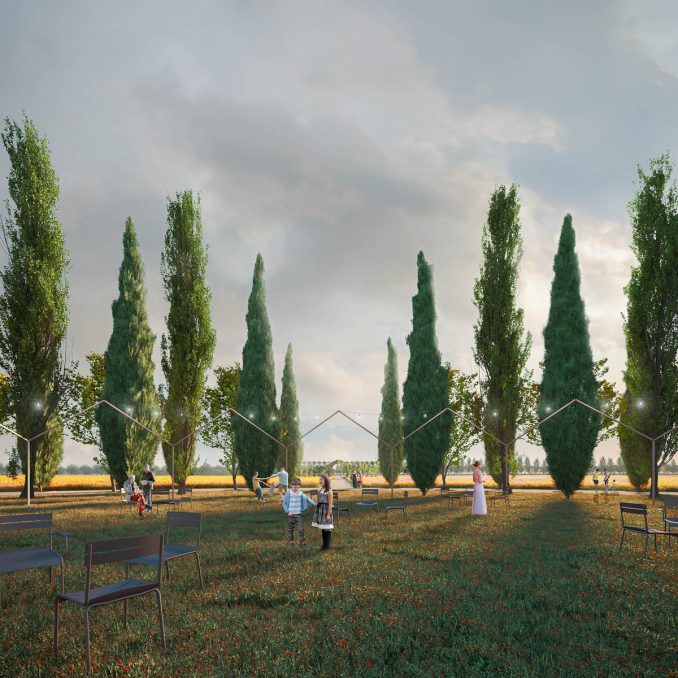
The “Parco della Reggia di Rivalta” although its empty appearance, is a ground that has been occupied by several functions over time: it has been administrated by several owners, and it has gone through both splendor and decay. In the public imaginary, the park is associated with the garden realized in the first half of the 18th century –now lost- where the reference to Versailles Garden was sharp and recognizable. Yet, the site has been witnessing a number of histories and not just one.
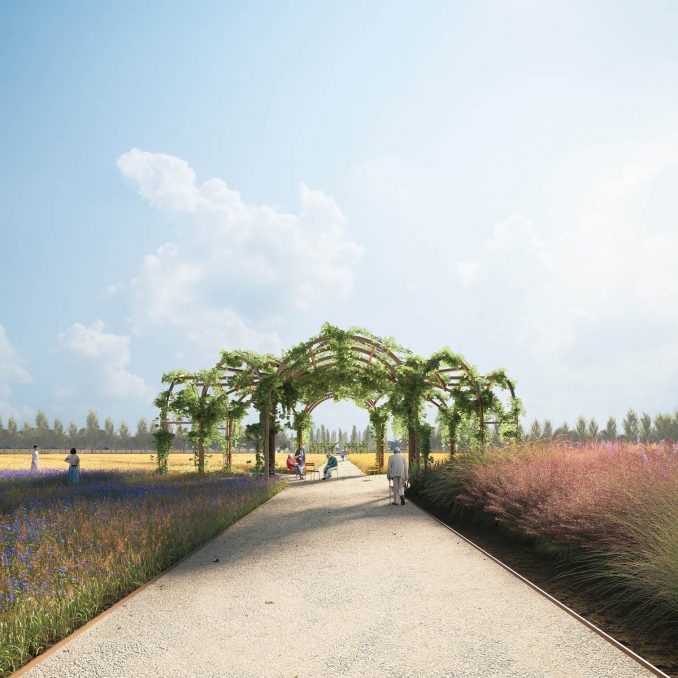
The plurality of the past traces become the main ingredients of the design, a palimpsest that doesn’t give priority only to the historical garden, but also refers to the different epochs, including its rural past and its current use as a public park.
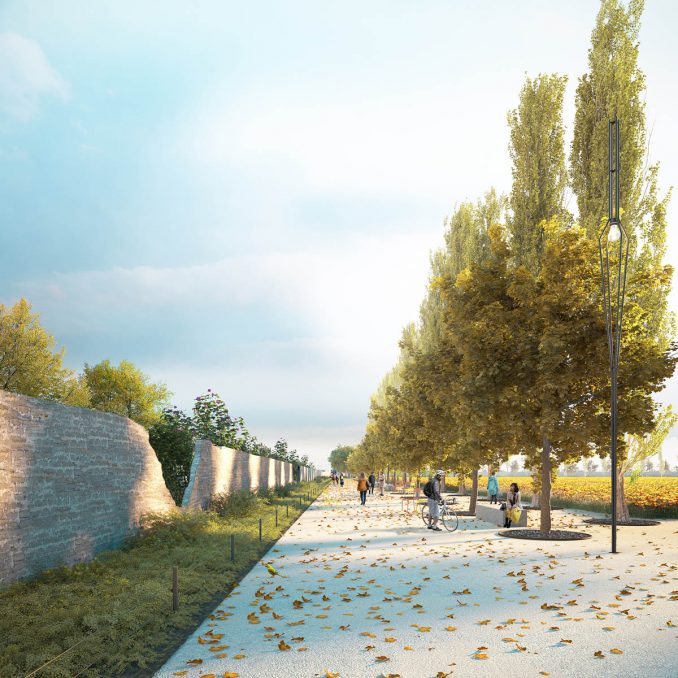
A perimeter boulevard hosts a number of ‘design intensities’ while assuring complete accessibility of the site. The boulevard creates a frame that defines an inner rural park: agricultural land is here rendered accessible by diagonal paths, that refer to both the enlightened landscape design principles as much as to the agricultural pattern of the region. The park becomes a platform for several programmatic scenarios, from local ones to national or even international events. The park aims to bridge the gap between conservation and change, reinterpreting the traces of the past in a contemporary park able to respond to the local yet global identity of Reggio Emilia.
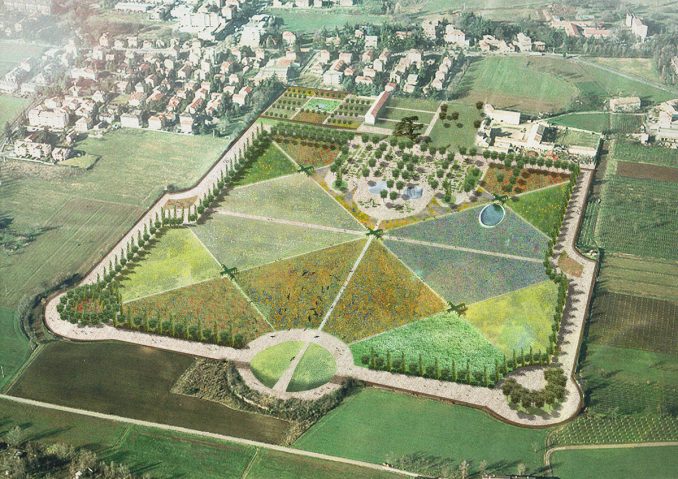
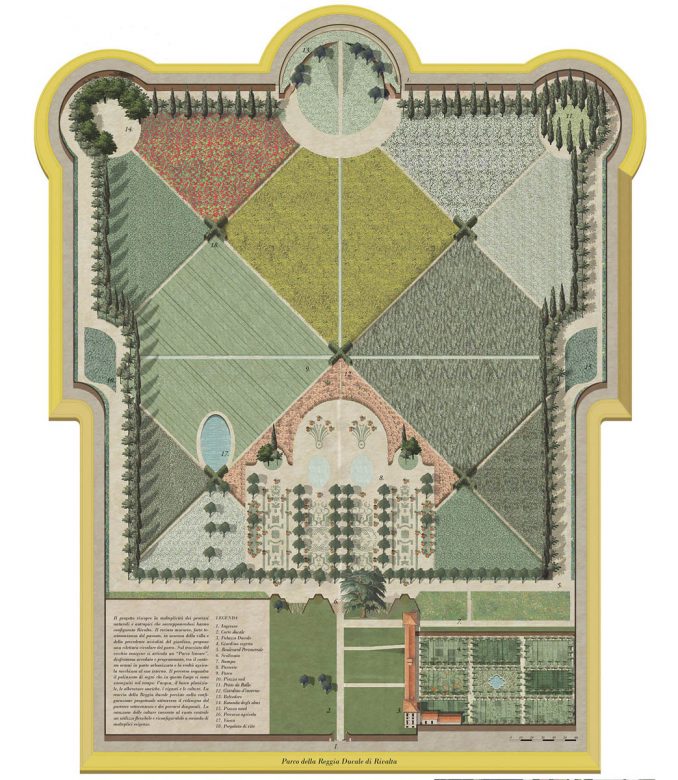

Parco della Reggia di Rivalta | Reggio Emilia, Italy | Openfabric
Landscape Architect: Openfabric
Collaboration: Caarpa, F&M Ingegneria
Client: Comune di Reggio Emilia
Size: 20ha
Status: Under construction
Image Credits: Openfabric

